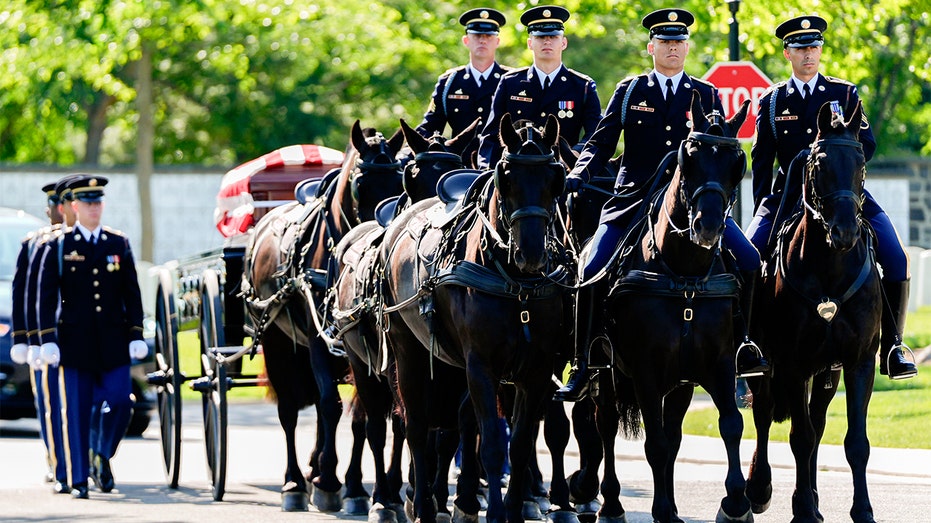Army Revives Historic Horse-Drawn Funeral Tradition After $28M Overhaul Following Two-Year Hiatus
U.S. Army's Caisson Detachment Returns to Arlington After Two-Year Absence, Honoring Veterans with Traditional Ceremonial Rides

The U.S. Army’s Caisson Detachment made a solemn return to Arlington National Cemetery this week, resuming its vital role in honoring fallen service members after a two-year absence. In Section 62, the reformed ceremonial horse unit transported the remains of Private Bernard Curran—who perished as a prisoner of war during World War II—marking the first mission for the Caisson Detachment since operations were suspended amid controversy and tragedy.
Private Curran lost his life in 1942 following his capture by Japanese forces in the Philippines. For decades, he lay in a communal grave overseas, only recently identified by the military and brought home for burial on American soil. The ceremony held at Arlington National Cemetery was imbued with greater significance as it also symbolized the resilience of a storied tradition revived after extensive reforms and reflection.
The Caisson program, renowned for its evocative processions through Arlington and its role in escorting America’s heroes to their final rest, was forced to halt all activities in May 2023. This followed the shocking deaths of two horses within four days, which cast a harsh light on inadequate care, grave neglect, and deteriorating stable conditions. Investigations revealed that horses were being kept in outdated facilities from 1908, fed low-quality hay, and suffered from recurring health issues due to poor stable management and contaminated feeding grounds.
Army leadership acknowledged the serious failings in equine care, with senior officials admitting that years of underinvestment allowed basic animal husbandry to lapse. The deaths of Mickey and Tony in early 2022, both attributed to neglect—one horse infamously found to have ingested nearly 44 pounds of gravel—prompted an immediate pause and a promise of sweeping changes. The halt, initially intended for 45 days, stretched much longer as the scale of required improvements became clear.
Major General Trevor Bredenkamp, who assumed command after the suspension, described how many horses had to be rehabilitated or retired due to chronic injuries and conditions. He noted, “This was decades of under-investment,” and outlined comprehensive measures to prevent any recurrence—raising feed off the ground, installing rubber matting in stalls, and eliminating hazardous gravel from feeding areas. The Army also recruited expert trainers and veterinarians, investing $28 million in upgrades and modernizing practices throughout the unit.
Lieutenant Colonel Jason Crawford, a lifelong equestrian and newly appointed caisson detachment commander, explained that the unit adopted rigorous routines for animal care, including regular veterinary and dental checks, along with continuous training for soldiers and civilian staff alike. Emphasis is now placed on finding horses suitable for the demanding work at Arlington—large, sturdy animals capable of escorting flag-draped coffins across miles of pavement each week without injury or fatigue.
“The way I look at anything with the horses, especially military animals, is they’re an extension of us,” Crawford remarked, highlighting the powerful symbolism these animals bring to military honors and the sacred trust now placed in their well-being. With new procedures in place, the Caisson Detachment can safely resume up to ten funerals weekly, preserving a tradition that dates back centuries—a visible manifestation of respect for those who served.
Senior Army leaders, including Secretary Dan Driscoll, expressed confidence in the renewed program. Driscoll stated, “Though this horse cannot speak, I think it would say that it is living one of the best lives of any horse in our country.” As the unit once again escorts America’s war dead through the marble avenues of Arlington, the Army hopes its reforms will ensure proper dignity for both the nation’s heroes and the horses who serve them in perpetuity.
Major General Bredenkamp summed up the rededication of the Caisson Detachment: “When we carry our honored dead to our final resting place in Arlington National Cemetery, it is a visible symbol of American resolve and honor.”




